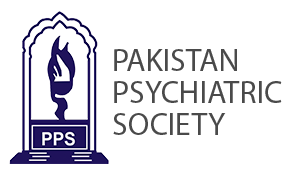PREVALENCE OF POST-TRAUMATIC STRESS DISORDER AND CO-MORBID DEPRESSION IN EARTHQUAKE SURVIVORS IN NWFP, PAKISTAN: A PRELIMINARY STUDY
Abstract
Objective: The aim of this study was to determine the prevalence of psychiatric morbidity in patients
presenting to Primary Healthcare Centers in the affected regions of Pakistan and Azad Kashmir, in the
aftermath of the October 8, 2005 earthquake. Another objective was to carry out a need-assessment
survey from patients’ and health care providers’ perspective.
Design: Observational study.
Place & duration of study: The study was carried out in Arja and Muzaffarabad in Azad Kashmir, and
Garhi Habibullah in North West Frontier Province in Pakistan, over a period of three weeks.
Subjects & Methods: A sample of patients visiting primary care centers in the above mentioned areas
was enrolled by convenient method of sampling. Data was collected on a specially designed data
collection form. Psychiatric diagnoses were based on ICD-10 diagnostic criteria.
Results: 140 patients participated in this study. The median age of the patients seen in the study was 32
years (Age range; 1-73 years), and an inter-quartile range of 21-40 years. Males and females were
represented almost equally (51% and 49% respectively). More were married (67%) than single (31 %). In
our sample 30 % patients were diagnosed with Depressive disorder and 16% with Generalized Anxiety
Disorder. Eighty one percent reported having suffered loss of property, 48% had suffered an injury during
the earthquake and 21% reported loss of a family member. Treatment and shelter were identified as the
most important needs both by the patients themselves and their primary care physicians.
Conclusion: Five months after the earth quake most common psychiatric morbidity was Depression
followed by Generalized Anxiety Disorder in primary care attendees in earthquake affected areas. PTSD
was conspicuously absent despite the fact that all the participants had suffered significant losses. This
needs to be taken into consideration when the plans for physical, psychological and social rehabilitation
for this population are made.
Key words: Primary care, Depression, Anxiety, PTSD.
Downloads
Copyright © JPPS. Published by Pakistan Psychiatric Society
Licensing: This work is licensed under Creative Commons Attribution-NonCommercial 4.0 International License
Readers may “Share-copy and redistribute the material in any medium or format” and “Adapt-remix, transform, and build upon the material”. The readers must give appropriate credit to the source of the material and indicate if changes were made to the material. Readers may not use the material for commercial purposes. The readers may not apply legal terms or technological measures that legally restrict others from doing anything the license permits.






.png)









